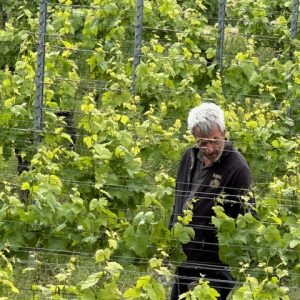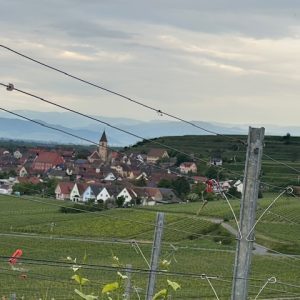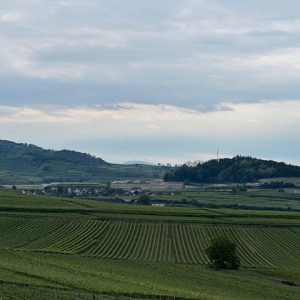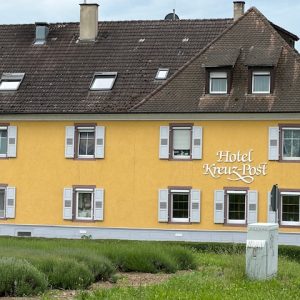Vogtsburg, Germany
This was the third time that I stayed at the Kreuz-Post Hotel-Restaurant in Vogtsburg im Kaiserstuhl (https://www.hotel-kreuz-post.de/). I love this region so much.
On the previous occasion, Rainer, the hotel owner, recommended a particular vineyard walk to me.
Since I had to make a personal trip to Switzerland from Paris, I thought I would take another swing through the Kaiserstuhl vineyard area of Germany. My pre-breakfast walk was stunning as Rainer said. Just look at my photos.
The other highlight of this area is the little train that winds its way through villages and vineyards from Riegel-Malterdingen to Breisach — see photo of the train.
Since I have already written too much on Kaiserstuhl, I thought that I would leave you, dear reader, with an extract from “The Wines of Germany”, a book by Anne Krebiehl (https://www.amazon.fr/wines-Germany-Anne-Krebiehl-MW/dp/1906821852).
Kaiserstuhl (4,1042 hectares) This volcanic outcrop sits between Vosges and the Black Forest in the Rhine plain. Its highest elevation, the Totenkopf, at a mere 557 metres nonetheless affords panoramic views to either of these mountain ranges and the Rhine.
Some parts of the Kaiserstuhl are covered in metre-deep layers of loess, in other parts the varied volcanic geology comes to light with tephrite, phonolithe and limburgite. Vast ‘monster’ terraces, as the locals call them, have been dug in the loess during rather too thorough Flurbereinigung in the 1960s (see box, page 144).
The combination of particularly mild climate and fertile loess might make you think that this has always been a little paradise but in fact it was ‘the poorhouse’ of Baden. It is thought that the vineyard close to the Burkheimer Schloss was the first Kaiserstuhl vineyard on volcanic soil, planted in 1781. It was not until a doctor, Ernst Georg Lydtin, bought land in Ihringen that the first vines were planted in the Winklerberg,, in 1815.
This was followed by the efforts of Johann Baptist Hau who planted various noble varieties in 1822, including Spätburgunder (Pinot Noir) amongst others. The brothers Blankenhorn, who planted in Ihringen in 1844 after blasting bits off the Winklerberg, used Riesling and Traminer sourced in Deidesheim and Spätburgunder from Clos Vougeot.
But as Konrad Salwey reports, red wines were still a prized rarity in the 1950s and ’60s. Co-ops only sold red wine to customers who would also buy sufficient quantities of white. The predominance of Spätburgunder (Pinot Noir) is thus rather recent.





